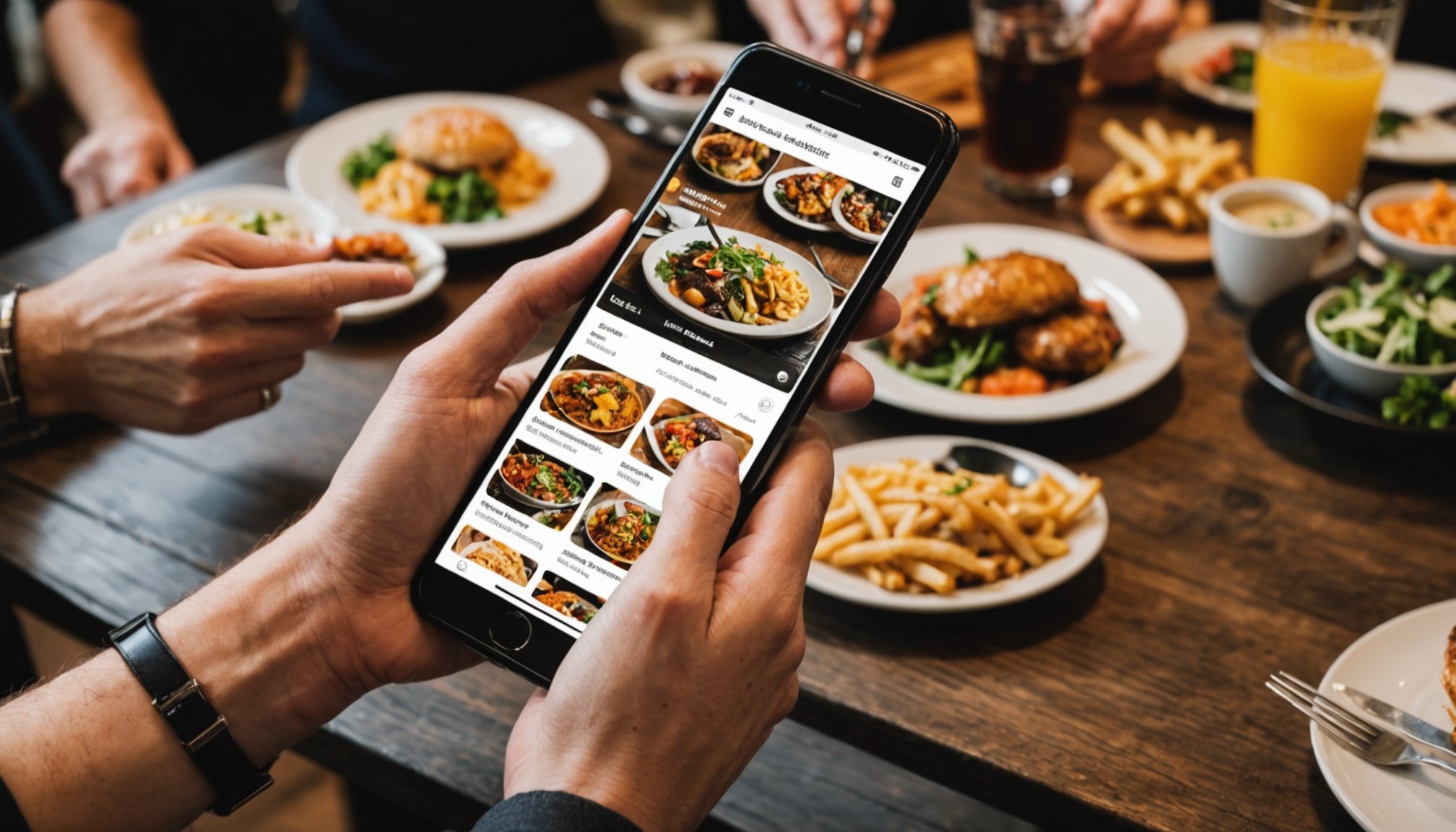Understanding Online Ordering Systems
In the UK restaurant sector, online ordering systems have transformed how businesses operate, driving substantial improvements in revenue and efficiency. These systems, initially designed to streamline the order process, have evolved dramatically. By integrating advanced restaurant technology, such as AI and machine learning, restaurants can now offer personalised experiences based on customer preferences and past behaviours.
The adoption of these technologies not only enhances customer satisfaction but also bolsters revenue enhancement. Statistics indicate that online ordering can lead to a 20% increase in average order value. This is primarily due to features like suggested items and special promotions targeted at the consumer’s purchasing habits. Additionally, the ability to handle a higher volume of orders without overwhelming staff is a critical benefit, allowing for efficient service even during peak times.
Beyond revenue, restaurants save on costs typically associated with manual order processing and potential errors. This efficiency frees resources that can be redirected towards improving other areas of service and customer experience. As a result, the UK restaurant market sees online ordering systems not just as a technological adoption, but a critical strategy for competitive advantage.
Optimizing Usability for Customers
In today’s fast-paced digital landscape, ensuring an optimal user experience is crucial for businesses to thrive. An intuitive interface design plays a pivotal role in enhancing customer engagement. When users can navigate a platform effortlessly, they are more likely to interact positively, thereby boosting overall satisfaction and fostering loyalty. Designing interfaces that mirror natural interactions and anticipate user needs can significantly elevate the entire experience.
In the same genre : Essential cybersecurity enhancements for uk government agencies: proven strategies for a safer future
Streamlining the checkout process is another vital element. A simplified process not only reduces abandonment rates but also increases conversion rates. By minimizing the number of steps required and integrating smooth payment options, businesses can significantly enhance their online ordering efficiency. Offering features like guest checkout and secure payment gateways can further streamline this crucial stage.
In addition, creating mobile-responsive platforms is essential for accessibility. With a growing number of customers using smartphones to make purchases, ensuring that websites are optimized for mobile devices is no longer optional—it’s imperative. Responsive designs that adjust seamlessly to various screen sizes ensure a consistent user experience across all devices, allowing for efficient online ordering and enhancing overall customer engagement. By focusing on these elements, businesses can optimize usability, catering effectively to customer needs.
Integrating Technology Solutions
In the realm of modern dining, technology integration has become paramount. Restaurants benefit greatly by incorporating restaurant software that streamlines operations. One fundamental tool is the Point of Sale (POS) system, which, when integrated with online platforms, transforms the way orders are managed. This integration ensures a smoother flow from customer order to kitchen preparation, enhancing overall efficiency.
By unifying POS systems with platforms like delivery systems, restaurants can enjoy effortless communication between different service points. This not only reduces manual errors but also optimises the dining experience for consumers. Efficiency is boosted, and customer satisfaction scores generally rise with swift service.
Furthermore, partnering with third-party delivery service companies extends a restaurant’s reach beyond physical locations. By leveraging these partnerships, establishments can access a broader audience that prefers the convenience of having meals delivered directly to their doorsteps. These delivery systems can also provide valuable insights through data analytics, offering feedback on order preferences and trends.
To sum up, technology integration is no longer a luxury but a necessity in today’s fast-paced culinary environment. It enhances customer interaction, supports seamless operations, and opens doors to expanded business opportunities, making it a cornerstone of successful restaurant management.
Marketing Strategies to Boost Online Orders
In today’s digital age, utilising effective restaurant marketing strategies is crucial for driving online promotions and increasing orders. One key approach is creating targeted promotional campaigns. These campaigns can include special offers or discounts designed specifically to attract and engage customers online. By effectively targeting the right audience, restaurants can significantly increase online traffic.
Another impactful strategy is harnessing the power of social media. Platforms like Instagram and Facebook offer unparalleled opportunities to enhance visibility and foster engagement with potential customers. By consistently posting appealing content and interacting with users, restaurants can create a vibrant online presence, thereby encouraging more online orders.
Additionally, email marketing strategies play a pivotal role in maintaining relationships with existing customers. By sending personalised offers, newsletters, and updates, restaurants can entice repeat business. Regular communication with customers through email not only reminds them of previous positive experiences but also keeps them informed about new promotions.
These strategies, when implemented thoughtfully and cohesively, can significantly boost a restaurant’s online orders, ultimately leading to sustained growth and success in the competitive market.
Engaging Customers Through Online Ordering
Enhancing customer engagement in the digital space is essential for businesses today. One effective method is personalizing the online ordering experience. Customers appreciate tailor-made suggestions and seamless interactions. By analysing past purchase data and browsing patterns, businesses can recommend products that truly resonate with individual preferences.
Loyalty Programs
Implementing loyalty programs is another powerful strategy to boost repeat business. These programs reward customers for their continued patronage, encouraging them to return frequently. Rewards can include discounts, exclusive access to new products, or even a points-based system that accumulates towards future savings. This fosters a sense of appreciation and strengthens long-term relationships with customers.
Gathering Customer Feedback
To keep the online ordering experience evolving, it’s crucial to gather customer feedback. This process involves actively soliciting reviews and comments about the service. Encouraging candid feedback helps identify pain points, leading to informed decisions for improvements. Regularly reviewing this feedback ensures that the service stays aligned with customer expectations and needs.
In summary, through personalization, loyalty programs, and continuous feedback, businesses can not only enhance the online ordering experience but also cultivate more meaningful and profitable relationships with their customers.
Best Practices for Increasing Sales
In the competitive world of sales, adopting dynamic pricing strategies can be a game-changer. Dynamic pricing allows businesses to adjust prices in response to market demand, competitor pricing, and other external factors. By implementing these strategies, companies can maximize their revenue potential and stay competitive. For example, a restaurant might raise prices during peak dining hours when tables are in high demand but offer discounts during slower periods to attract more patrons.
Upselling and Cross-Selling
Another effective sales strategy involves mastering the art of upselling and cross-selling. Upselling encourages customers to purchase a more expensive version of the product they are considering, while cross-selling suggests complementary items. This not only increases the average order value but also enhances the customer experience by introducing them to products they might have overlooked.
Analyzing Sales Data
To optimize menu offerings and promotions, it’s crucial to delve into sales data analysis. By examining this data, businesses can identify which items are popular, which aren’t performing well, and spot trends over time. This information can be used to tailor promotions or adjust product offerings, ultimately leading to increased operational efficiency and optimized pricing strategies.











